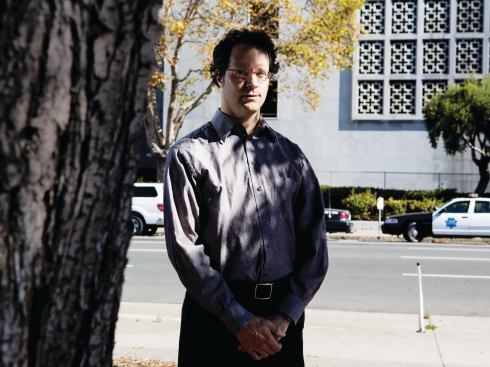Noah Kalina
Raphael Sperry stands in front of San Francisco’s Hall of Just…
Clean Hands or Dirty Hands?
So is Sperry right? Should architects steer clear of prison design until we eliminate injustice from society? Or are Ricci and Munn right? Do architects have a role to play in advancing civilization forward? In moral philosophy, there’s a term for this kind of question. It’s a clean-hands/dirty-hands debate, says Victoria Beach, AIA, a Monterey, Calif.–based architect who chairs the AIA’s National Ethics Council—where, she says, Sperry will file his proposed amendment. The question, according to Beach, is this: “At what point is it moral to intervene or not intervene?”
She points to a hypothetical paradox known as the Trolley Problem. A runaway trolley car is poised to mow down and likely kill five people. But you can pull a lever to switch the car onto a side track where only one person is standing. Do nothing and five people die, but your hands are clean. Take action and one person dies, but you are personally responsible for that one death—your hands are dirty. “Is the moral obligation to walk away? Or is it the opposite?” asks Beach.
Sperry, who argues for the clean-hands approach, would like architects to help change society’s agenda from being “tough on crime” to building communities that prevent crime. Much like the protestors in Toronto, he argues that instead of spending money on prisons we should pour our resources into affordable housing, health clinics, and centers for drug rehabilitation.
In the short term, Sperry’s campaign to change the AIA’s code of ethics won’t be easy. Such changes are rare, but additions to the document over the past decade tend to increase the degree of social responsibility expected from architects. “Members should be environmentally responsible and advocate sustainable building and site design,” says one recent standard. They should do pro bono work for “indigent persons,” or in cases of disaster or emergency, says another.
In that context, Sperry’s ban on designing cells for solitary confinement or death chambers doesn’t seem so far-fetched. However, the newer standards are based on the assumption that architects can and do make things better. They advocate a dirty-hands approach. And so Sperry’s ban may be a difficult position for the AIA to embrace.
But his long-term solution is all about asking architects to do more rather than less. “We can’t wait for our public clients to stop asking for prisons and start asking for the design of community projects,” he says. “As most clever students learned in architecture school, we need to challenge the program we’ve been handed in order to make a really successful design solution.”




